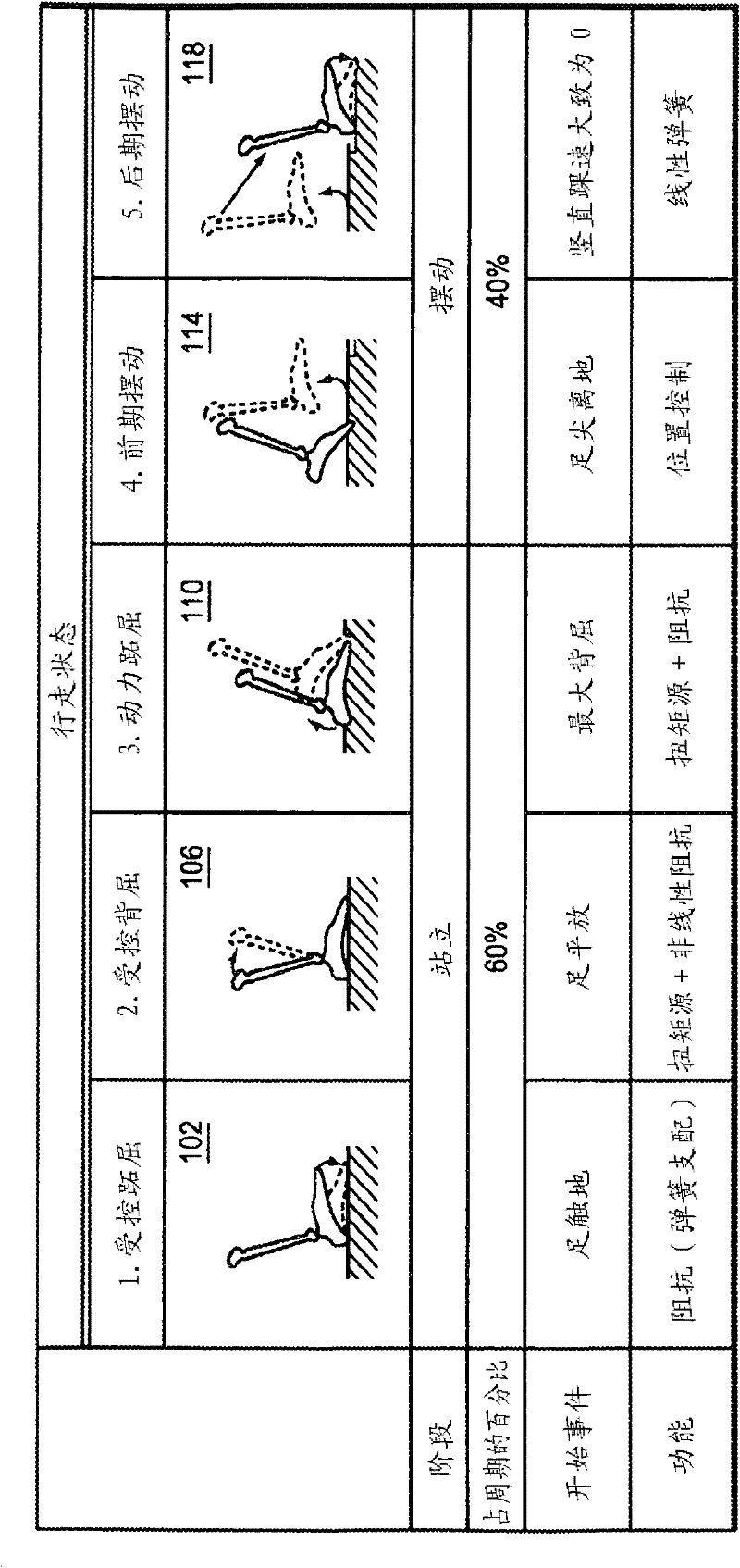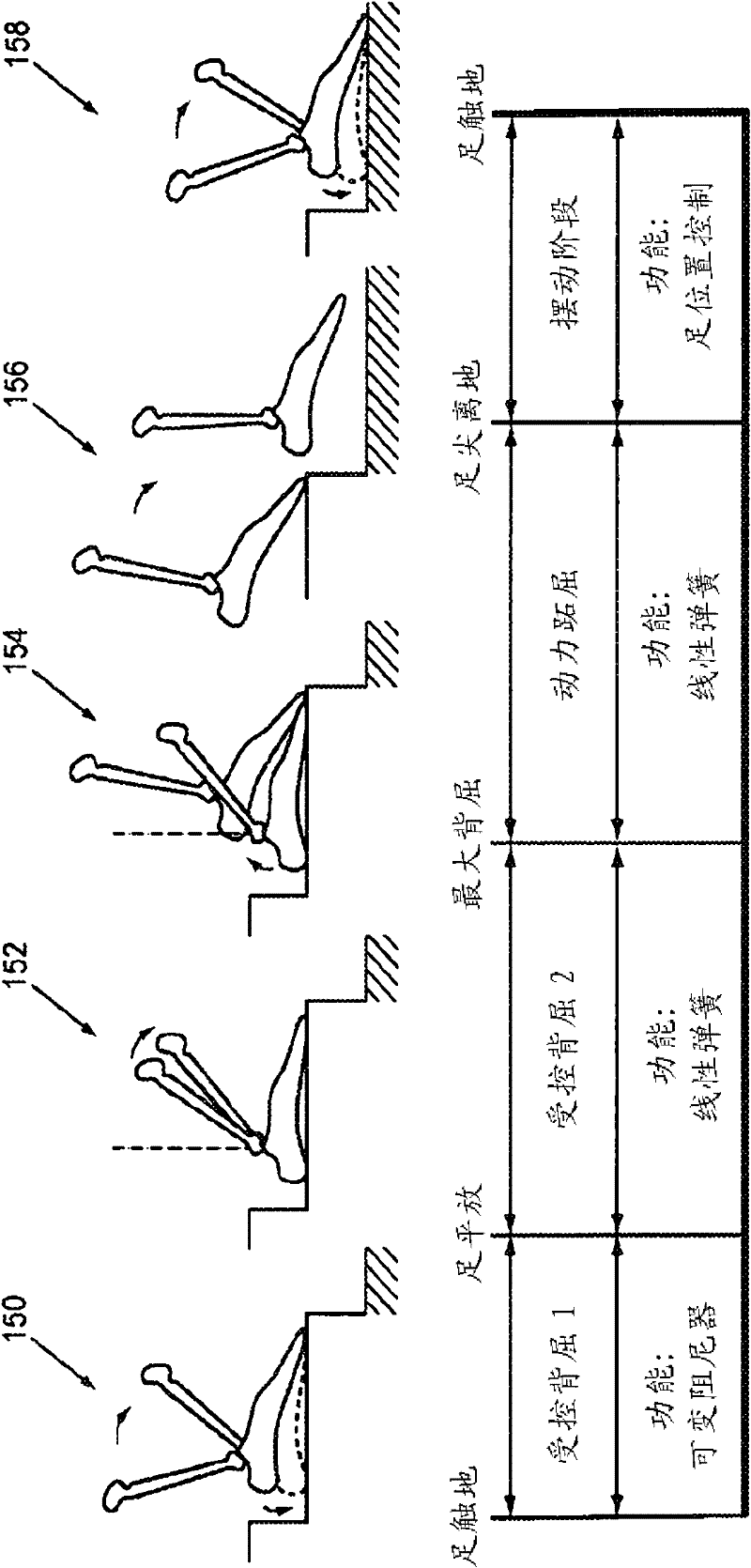Hybrid terrain-adaptive lower-extremity systems
A technology for lower limbs and orthoses, applied in the field of lower limb prostheses, orthoses and exoskeleton devices, can solve problems such as the inability to properly reproduce the biomechanical characteristics of the gait cycle
- Summary
- Abstract
- Description
- Claims
- Application Information
AI Technical Summary
Problems solved by technology
Method used
Image
Examples
Embodiment Construction
[0177] Identify ongoing activities
[0178] Inertial attitude and trajectory estimation
[0179] Figure 2 is a schematic diagram of a method for determining a prosthesis, orthosis or exoskeleton device based on the inertial posture of the calf element 220 connected to the ankle joint 200 and the angle between the calf element 220 and the foot element 208 ( E.g Figure 17A The ankle joint 200, heel 212, and toe 216 of the device 1700) shown are trajectories. The attitude is the position and orientation of the coordinate system. The device 1700 includes an inertial measurement unit 204 connected to the lower leg element 220. The inertial measurement unit 204 includes a three-axis rate gyroscope for measuring angular rate and a three-axis accelerometer for measuring acceleration. The inertial measurement unit is placed on the calf element 220 to measure the angular velocity and acceleration of all three axes of the calf element 220. The inertial measurement unit 204 provides six d...
PUM
 Login to View More
Login to View More Abstract
Description
Claims
Application Information
 Login to View More
Login to View More - R&D
- Intellectual Property
- Life Sciences
- Materials
- Tech Scout
- Unparalleled Data Quality
- Higher Quality Content
- 60% Fewer Hallucinations
Browse by: Latest US Patents, China's latest patents, Technical Efficacy Thesaurus, Application Domain, Technology Topic, Popular Technical Reports.
© 2025 PatSnap. All rights reserved.Legal|Privacy policy|Modern Slavery Act Transparency Statement|Sitemap|About US| Contact US: help@patsnap.com



